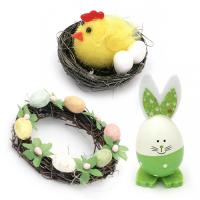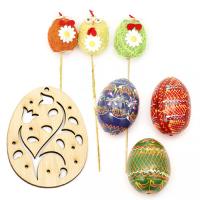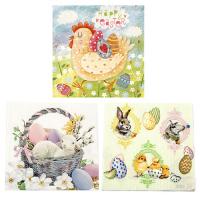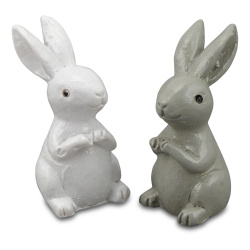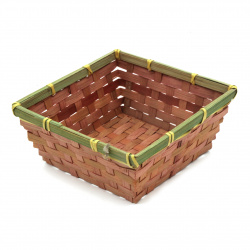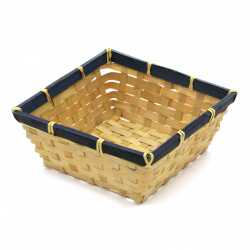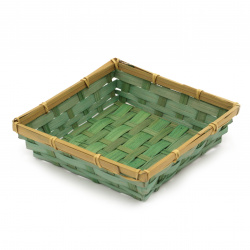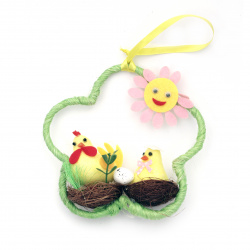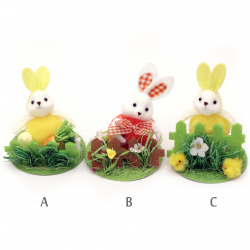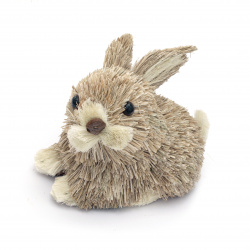Easter Supplies for Art and Craft Projects

Polystyrene Eggs for Decoration, 35x26 mm - 10 Pieces

Polystyrene Egg for Decoration, 120x82 mm - 2 Pieces

Polystyrene Eggs for Decoration, 40x28 mm - 10 Pieces

Polystyrene Eggs for Decoration, 56x41 mm - 5 Pieces
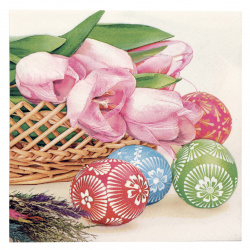
Napkin for Decoupage Decoration 33x33 cm three-layer Maki-1 piece
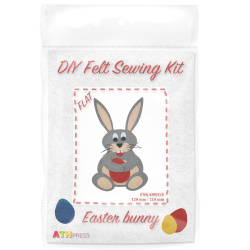
DIY Kit Felt Easter Bunny / Gray / 120x210 mm
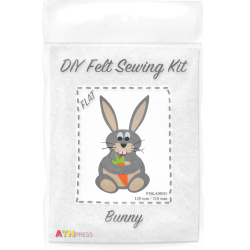
DIY Kit - Bunny made of Felt / Gray / 120x210 mm
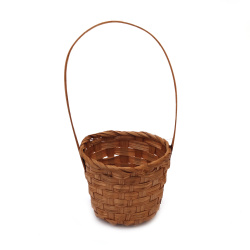
Woven Basket 80x60x170 mm Brown
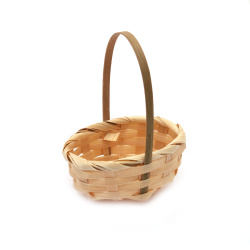
Woven Ellipse Basket 80x60x95 mm White
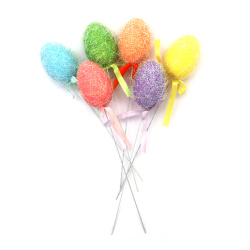
Set of Styrofoam Eggs on a Stick / MIX / 57x39 mm, 170 mm - 6 pieces
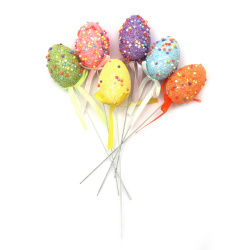
Set of Styrofoam Еggs on a Stick / MIX / 57x39 mm, 170 mm - 6 pieces
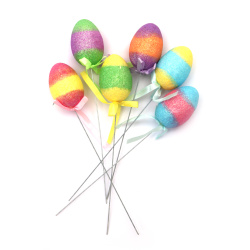
Set of Styrofoam Eggs on a Stick / MIX / 57x39 mm, 170 mm - 6 pieces
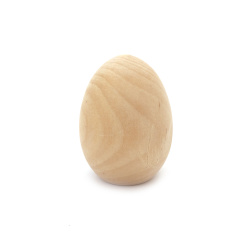
Wooden Еgg for decoration 45x34 mm
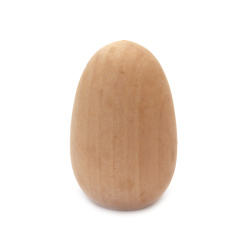
Wooden Еgg for decoration 66x44 mm
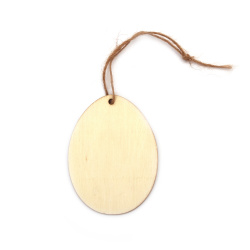
Wooden Egg, Easter Decoration, 80x60x2 mm, with rope
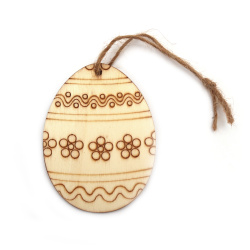
Easter Decoration, Wooden Egg 80x60x2 mm, with rope
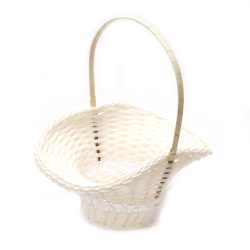
Plastic Basket 260x115x285 mm color white
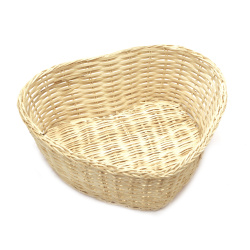
Heart-Shaped Basket, 240x215x70 mm, Natural Color
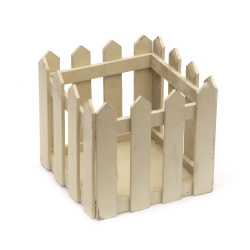
Wooden Fence Basket, 155x155x145 mm, Pale Yellow Color
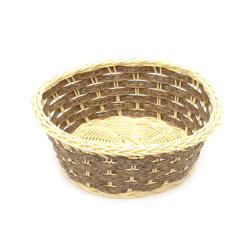
Woven Round Basket, Melange Brown, 175x70 mm
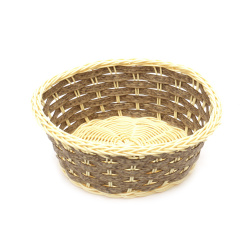
Woven Round Basket, 200x90 mm, Brown Melange Color
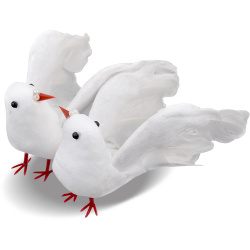
Doves for Decoration Made of Cotton Wool and Feathers, MEYCO, 16 cm, in White Color - 2 Pieces
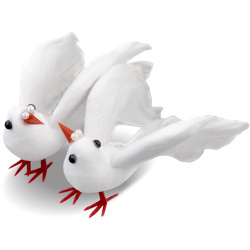
Decorative Doves, Cotton Wool and Feathers MEYCO, 9 cm, White Color - 2 pieces
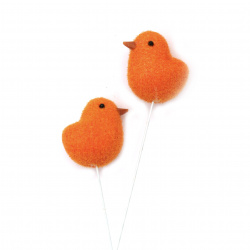
Styrofoam Chicken, 40 mm, on Stick, 200 mm, Orange Color - Pack of 6
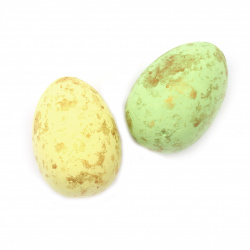
Set of Styrofoam Decorative Easter Eggs / 40x60 mm / MIX - 6 pieces
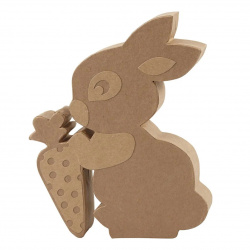
Papier-Mâché Standing Rabbit Figure, 15x18x2.5 cm with Attached Details
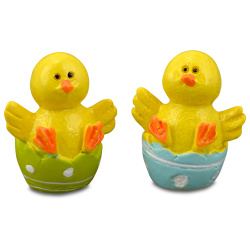
Polyresin chicken figurine in green and blue egg 30x20x35 mm - 2 pieces
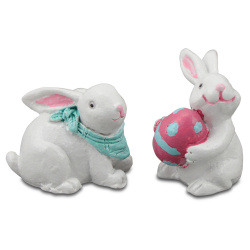
Polyresin figurine rabbit with scarf and egg 23±30x25x15±27 mm - 2 pieces
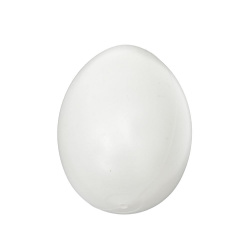
Plastic egg, 120x81 mm with one 3 mm hole, white
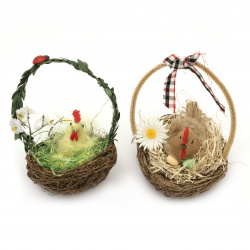
Basket with Nest and Hen for Easter Home Decor / 100x120 mm / ASSORTED
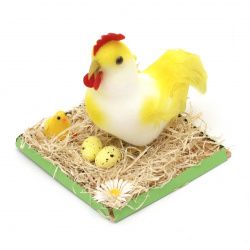
Easter Figure for Home Decoration / Hen in Straw / 150x140 mm
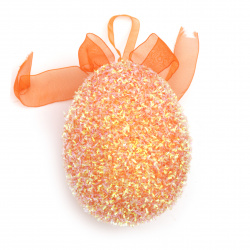
Styrofoam egg for decoration 125x92 mm for MIX suspension
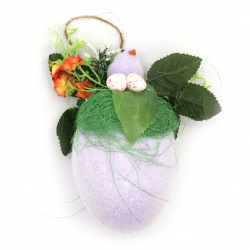
Styrofoam egg for decoration 170x87 mm with chicken for hanging MIX
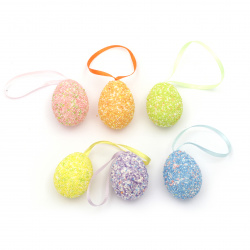
Styrofoam egg for decoration 40x30 mm for hanging MIX -12 pieces
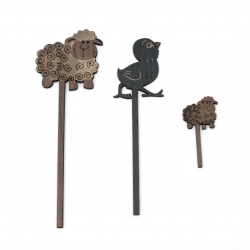
Figurine brown MDF for decoration 160 ~ 55x54 ~ 28x3 mm assorted elements
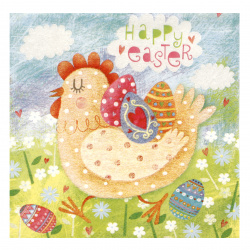
3-Ply Decoupage Napkin TI-FLAIR for Easter Decoration / Easter Hen with Eggs / 33x33 - 1 piece
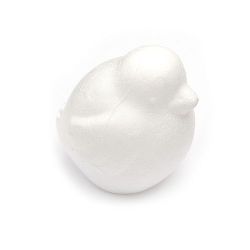
Styrofoam Chicken for Decoration / 100 mm -1 piece
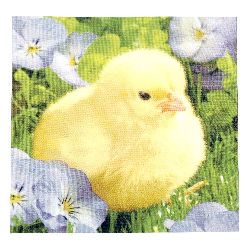
Napkin HOME FASHION 33x33 cm three-layer Fluffy Chick -1 piece
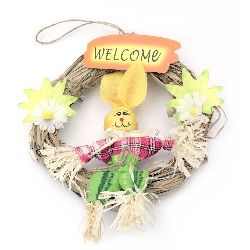
Wreath natural 160 mm with Easter decoration for hanging
EASTER - THE HOLIDAY OF HOLIDAYS!
How Did Easter Get Its Name?
Centuries ago, before the birth of Jesus, people in Europe worshipped the Goddess of Spring called “Eostre.” They believed that the sun “died” during winter, and the arrival of spring brought the sun back, symbolizing its rebirth. This belief was so strong among Europeans that the arrival of spring was celebrated and became known as “Easter.”
Fascinating Easter traditions and customs exist worldwide. European countries celebrate with specific symbols, while Americans have their own traditions. However, two common symbols of Easter seen across most Christian countries are Easter eggs and bunnies. Let’s explore their meaning and traditions globally.
Popular Easter Symbols
Easter Eggs
Easter eggs symbolize "new life." Christians believe that Jesus rose from the dead after his crucifixion, signifying that life triumphed over death. For Christians, the egg symbolizes the resurrection of Jesus. When eggs are cracked, their shells represent the empty tomb.
Historical records do not pinpoint when eggs were first used to celebrate Easter, but this practice existed long before Jesus’ birth. Eggs always held special significance as they appear lifeless yet contain life within. Initially, people were given intricately carved eggs made of wood or precious stones. Around 100 years ago, sweet eggs made of sugar or marzipan became popular, followed by the widespread sharing of chocolate eggs on Easter.
Decorating Easter Egg Baskets
Decorating Easter eggs is a favorite activity for children during Easter. In some countries, parents organize Easter egg hunts, telling children that the Easter bunny or hare has hidden chocolate eggs somewhere in the house or garden, and children must race to find them.
In some places, decorating hard-boiled eggs is an essential Easter tradition. They are painted with dyes, and watercolors and adorned with stickers and other decorations.
Egg Rolling
In the US and some other countries, egg rolling is a popular Easter game. The lawn of the White House is one of the most famous sites for this game in America. Children and parents push eggs together, rolling them across the grass with wooden spoons.
The Easter Bunny
The Easter bunny or hare, like Easter eggs, has been associated with spring celebrations since ancient times. According to folklore, the Anglo-Saxon goddess of spring, Eostre, loved rabbits and had a hare as her companion, symbolizing fertility and rebirth. Later, Christians adapted the hare symbol into sweet little Easter bunnies.
The traditional story explaining the presence of Easter bunnies suggests that the bunny lays Easter eggs, which parents hide around the house or garden. Children then run around and participate in an egg hunt.
This idea of an egg-laying bunny originated in the US in the 1700s when German immigrants brought the tradition. Their children made “nests” with hats or caps, believing that beautiful nests would attract the Easter bunny to leave the best Easter eggs for them.
An Easter Journey Around the World
North America and Caribbean Easter Traditions
Egg tapping, or knocking eggs, is a long-standing game in Louisiana, USA, dating back to the 1950s. Contestants gather on courthouse steps on Easter Sunday and begin knocking the tops of two eggs together. If your egg cracks, you must surrender it, and the game continues until only one egg remains.
In Bermuda, Easter lilies are grown and exported. Kite flying is another tradition symbolizing Christ’s ascension. Besides Easter eggs and hot cross buns, fishcakes are a traditional Easter food on the island.
Easter Customs in the Czech Republic
You may be surprised to learn that in the Czech Republic and Slovakia, Easter Monday involves men lightly whipping women with handcrafted willow switches called pomlázka (Czech) or korbáč (Slovak). In regions like Moravian Czechia, women are sprinkled with cold water.
This whipping act, though seemingly painful, symbolizes preserving a woman’s beauty, health, and fertility for the coming year. These "whipped" women then offer colorful eggs (kraslice) as a gesture of gratitude and invite men to eat and drink. In Poland, a similar tradition called Dyngus Day has now evolved into an all-day water fight.
How to Determine When Easter Occurs Each Year?
Since the church calendar follows the lunar phases, Easter can fall on any Sunday between March 22 and April 25!
Easter celebrates the anniversary of the Death and Resurrection of Jesus Christ. This occurred on a date representing the Jewish calendar’s first full moon of spring. Therefore, Easter Day is always the first Sunday after the first calculated Full Moon on or after March 21. If the Full Moon falls on a Sunday, Easter is the following Sunday.
Calculating the Date of Easter
Determining the date of Easter is complex! It involves lunar and solar cycles. Below is a simplified formula for the years 1900 to 2199:
- Divide the year by 19: 2009/19 = 105.73
- Multiply the whole number before the decimal by 19: 105x19 = 1995
- Subtract the result from the year: 2009-1995 = 14
- Add 1: 14 + 1 = 15
- Find the "Golden Number" in Easter tables (15 for 2009).
- Easter falls on the first Sunday after this date.
- In 2009, Easter was on April 12, so it works!
What Flowers Are Associated with Easter?
Many flowers are linked with spring and Easter celebrations. Some have gained special significance among Christians:
- Easter Lilies: These white flowers symbolize purity and goodness, reminding Christians of Christ’s perfection when he died on the cross.
- Passion Flowers: These flowers symbolize various elements of Christ’s crucifixion and resurrection. Their three stamens represent Christ’s wounds or the Trinity, while their petals symbolize the crown of thorns or the ten apostles who did not betray Christ.
Many churches worldwide host flower festivals during Easter, filling spaces with spring blooms and recreating scenes from the Easter story.
EM ART Tips for Celebrating Easter!
Easter is a time for creativity, joy, and family togetherness. Explore EM ART’s extensive collection of materials to make your Easter celebrations unforgettable!
A Few Tips from EM ART on How to Celebrate Easter!
Easter is a religious holiday celebrated by Christians, but non-religious people often join in marking the day. Religiously, Easter celebrates the resurrection of Jesus Christ. Non-religious celebrations include activities such as brunches, family gatherings, and egg decorating. Regardless of why you celebrate Easter, you can do plenty of activities to mark the day.
Paint Eggs: At EM ART, we’ve ensured you can find everything you need for your Easter celebrations in one place. Boil some eggs and let your children have fun decorating them for Easter.
Usually, you place dye in different cups for coloring. Eggs are then dipped into the dye to add color. You can even get creative and paint the eggs using markers or watercolors.
Make sure your children wear old clothes while decorating eggs.
Organize an Easter Egg Hunt: An iconic part of Easter is the egg hunt. Have the kids hide real boiled eggs they’ve decorated or fill plastic eggs with treats and hide them around your home.
If you choose plastic eggs, you can include items like pretzels for healthier snacks. Religious families sometimes add Bible verses written on small pieces of paper inside the eggs.
Track where all the eggs are hidden, just in case not all are found during the hunt. This is particularly important if using real eggs, as they will eventually spoil.
Check if there’s an Easter egg hunt event in your area for even more fun with more children.
Provide Easter Baskets: Easter baskets are an important tradition. Kids love waking up to a basket full of Easter goodies. Fill them with small treats like candies or toys. If you’re religious, you can include plastic eggs with Bible verses inside.
Snacks don’t have to be unhealthy. If you prefer healthier options, include fresh fruits in the baskets. Alternatively, you can add small toys like plastic animals or plush figurines.
Bake Bunny-Themed Treats: The Easter Bunny is an exciting part of Easter for children. Bake bunny-shaped treats to make the holiday even more special.
You can make bunny-shaped sugar cookies using cookie cutters. For another idea, bake three cinnamon rolls: stick two together for a body like a snowman, then cut the third in half for ears. Arrange for them to create a bunny and decorate it with cream cheese frosting. Use chocolate chips or blueberries for eyes.
Decorate with Your Kids: Children often love decorating for holidays. Grab some of the decorations available at EM ART. You can also use our crafting tutorials. Kids can enjoy making chicks and bunnies using construction paper or felt.
Window stickers are great for younger kids since they’re fun and easy to use. If hosting an Easter brunch or dinner, have kids create special placemats for guests using craft paper.
Go for a Walk or Hike with Family or Friends: Easter often coincides with the arrival of warmer weather. If you live in a region where Easter marks the start of spring, take advantage of the season by celebrating outdoors. Spend Easter Sunday walking or hiking along a nearby nature trail.
If you don’t live near forests or parks, simply walk around your neighborhood with family and friends. For example, instead of driving to your favorite ice cream spot, walk or bike there.
Host an Easter Brunch: Many people enjoy a midday brunch on Easter. You can visit a restaurant offering a special Easter brunch or prepare themed dishes with family or friends at home.
Because Easter revolves around eggs, dishes like deviled eggs or scrambled eggs often make an appearance. Ham is also a popular Easter main dish. Consider side dishes like mashed potatoes or glazed carrots.
Use a spring color scheme to decorate. For example, use:
- Pastel plates
- Napkins
- Tablecloths
- Silverware.
Plant Something to Celebrate New Life: Since Easter occurs during spring in many parts of the world, it is often viewed as a celebration of life. Visit a local nursery and pick up some seeds to plant in your yard or a pot at home. Growing new flowers or plants can symbolize welcoming spring and celebrating Easter.
Spend time with family and friends. Holidays are a great opportunity to connect with loved ones and enjoy time together. Most people have the day off for Easter, so make the most of it. Plan something special with your loved ones to create a memorable Easter together.
For example, you and a group of friends could gather for an Easter Sunday dinner.
Take Photos Each Year to Preserve Memories: Pictures are a fun way to remember the holiday. Bring a camera to document meals, activities, and gatherings. Capture great moments that will help you cherish your Easter memories for years to come.
Reflect on the Significance of Different Days During Easter Weekend: Easter is not just one holiday. It includes Holy Week, leading up to the celebration of Christ’s resurrection. Starting with Palm Sunday, take time to reflect on the biblical events leading to Easter.
If your church holds special services these days, attend them if possible. From Palm Sunday to Holy Tuesday, reflect on the stories of Christ entering Jerusalem and the temples there. Holy Wednesday marks Judas’ decision to betray Jesus and begins the story of his persecution.
Maundy Thursday commemorates the Last Supper shared between Jesus and his disciples. Good Friday marks Jesus’ crucifixion.
Holy Saturday and Sunday, or Easter, are the final two days of Holy Week. These days commemorate and celebrate Christ’s resurrection!
Attend Easter Church Services: Nearly every Christian church offers an Easter service on Easter Sunday. The format of the service will vary depending on your church.
Attending an Easter service is a meaningful way to focus on the Christian messages associated with the holiday. Don’t forget to attend your church on Easter morning.
If you have young children, check whether Sunday school offers special Easter classes. These can help children understand the significance of Easter in a way that’s appropriate for their age.
Read the Easter Story in Your Bible: Take some time over the Easter weekend to read the Easter story. This can help you focus on the meaning behind the holiday. Reflecting on why the holiday is celebrated can deepen your connection with your faith and its traditions.
Much of the Easter story is found in the New Testament, covered in the books of Matthew, Mark, Luke, and John. If you have young children, consider finding a children’s Bible that tells the Easter story in a way they can easily understand.
Discuss Jesus’ Sacrifice with Your Family: Easter is primarily a celebration of God sacrificing His only son for your sins. Use this time to talk about its significance with your family. On Easter morning, discuss what Christ’s sacrifice means to you. Why are you thankful for Jesus’ sacrifices, death, and resurrection?
One activity that could help is writing down instances where you’ve sinned on paper. Have everyone in your family do this on Holy Saturday and gather the papers together.
On Easter, find a way to destroy the papers.
For example, burn or shred them in a fireplace. This act symbolizes Jesus saving you by erasing your sins. Then, express your gratitude for Christ’s sacrifice.
Incorporate Non-Religious Celebrations: If you’re religious, not all Easter activities have to be faith-centered. Consider hosting a brunch or enjoying fun activities with your family, such as hiking. This can be especially helpful if you have non-religious relatives who want to celebrate with you!

